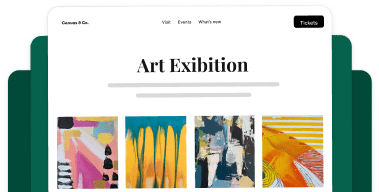Are you a photographer looking to get your work seen by more people online? Mastering SEO (search engine optimization) is crucial for photographers to attract more clients and traffic. Here’s a comprehensive guide to get you ranking higher and reaching your ideal audience.
In this ultimate guide, we’ll break down exactly what you need to know about SEO for photographers. From choosing the right WordPress theme to optimizing your images and using the power of blogging, you’ll learn actionable steps to help your photography site rank higher in search engines and get discovered by your ideal audience.
In This Article
- How Does SEO Boost Photography Websites?
- Enhance Your Photography SEO with These Top 2 Plugins
- 22 Essential SEO Tips for Photographers
- 1. Choose an SEO-Friendly Website Platform
- 2. Use a Responsive Theme, Designed for Photographers
- 3. Set up Google Search Console and Google Analytics
- 4. Decide What Should be Indexed and Submit an XML Sitemap
- 5. Boost Your Site Speed and Performance
- 6. Optimize Your Homepage, Portfolio, and Contact Page Like a Pro
- 7. Write SEO-Friendly Titles and Meta Descriptions
- 8. Harness the Power of Blogging
- 9. Use Strategic Keywords
- 10. Create a Clear Website Structure and Navigation
- 11. Optimize Your Images for the Web
- 12. Use Simple, Descriptive File Names for Images and Products
- 13. Add Informative Alt Text to Every Photo
- 14. Use Tags to Organize Your Images
- 15. Implement Image Deep Linking and Standalone Galleries
- 16. Add Schema Markup to Your Pages
- 17. Build Backlinks to Your Website (The Right Way)
- 18. Use Geographic Keywords and Optimize Local SEO
- 19. Encourage Clients to Leave Reviews and Comments
- 20. Share Your Images on Social Media
- 21. Leverage the Power of Video Content
- 22. Conduct an SEO Audit and Make Continuous Improvements
- Frequently Asked Questions
How Does SEO Boost Photography Websites?
SEO for photography is about enhancing your website’s visibility on search engines using targeted strategies. Want your photography to be discovered online? SEO is your answer!
A website alone won’t attract clients. SEO ensures they find you when searching keywords related to your work. Optimizing your site and images increases your chances of ranking high in search results, leading to more visibility, traffic, and bookings. Consider focusing on components like keyword selection, technical SEO tweaks, and photo optimization for Google images.
Example: Using terms like ‘New York Fashion Photographer’ strategically can enhance local search hits.
Enhance Your Photography SEO with These Top 2 Plugins
You already know the importance of having a strong online presence to showcase your work and attract new clients, but it can be overwhelming to know where to start. Plugins can simplify SEO complexities and enhance your website’s performance.
Before we dive into my list of SEO tips for photographers, here are 2 essential tools for photographers seeking to boost their online visibility:
Envira Gallery

Envira Gallery is a comprehensive solution for creating SEO-optimized image and video galleries on WordPress. I may be a little biased, but with over 3 million users—the proof is in the pudding. It’s powerful and extremely user-friendly, allowing you to:
- Optimize images for fast loading times without sacrificing quality.
- Add alt text, titles, and image captions to enhance SEO and accessibility.
- Use image deep linking and create standalone galleries with custom URLs for better indexing.
- Organize galleries with tags, albums (categories), and breadcrumbs to improve navigation and SEO.
- Boost speed with built-in lazy loading and pagination on large galleries.
Aside from SEO benefits, the plugin also provides everything you need to showcase your photography work, including unique layouts, lightbox display, animations, watermarking, client proofing, Adobe Lightroom integration, and so much more!
Envira Gallery enhances both visual appeal and site speed, facilitating better search performance and client impressions.
AIOSEO

Complementing Envira Gallery, AIOSEO (All-in-One SEO) is the best SEO plugin for WordPress, offering a full suite of tools to optimize your website for search engines. Its features include:
- Automatic XML sitemaps and TruSEO on-page analysis.
- Social media integration for increased visibility.
- A redirection manager and internal linking assistant.
- Rich snippet schema markup and local SEO enhancements.
AIOSEO simplifies SEO with powerful tools that make your site search-friendly.
Together, Envira Gallery and AIOSEO form an unbeatable combination for your photography website’s SEO, helping you draw more organic traffic and attract potential clients.
22 Essential SEO Tips for Photographers
Are you ready to increase your photography website’s visibility and attract more clients? Dive into these essential SEO strategies tailored specifically for photographers. With these actionable steps, you’ll optimize your site efficiently and see tangible results in your search engine rankings..
1. Choose an SEO-Friendly Website Platform
Begin with a strong foundation by selecting a platform that supports your SEO goals. I recommend WordPress for its SEO-friendly attributes, flexibility, and robust support community. Over 43% of websites use WordPress, attesting to its effectiveness in generating clean, search-engine friendly code.
As a photographer, having a site that’s both visually appealing and optimized is crucial for online success. WordPress lets you easily customize key elements like metadata and URLs, and the platform’s extensive library of themes and plugins simplifies design, functionality, and SEO.

It’s the perfect platform for photographers to efficiently enhance their site’s performance. Check out this step-by-step guide on how to install WordPress to get started.
Can’t decide between Squarespace and WordPress? Check out our guide on Squarespace vs. WordPress for Photographers.
2. Use a Responsive Theme, Designed for Photographers
Ensure your website adapts seamlessly across devices by choosing a responsive theme—this is crucial as over half of web traffic comes from mobile devices. A responsive design guarantees your site looks great on all screens and loads quickly, essential for retaining viewers and improving search rankings.
Photographers should look for a theme that highlights full-width images and offers visual page builders to create a striking portfolio site. SeedProd stands out in this area, providing user-friendly, drag-and-drop tools and aesthetically pleasing pre-built templates tailored for photography websites.

With SeedProd, setting up a stunning, professional portfolio site is quick and easy. The platform not only ensures fast, responsive design to enhance both user engagement and SEO effectiveness, but it also includes crucial features like customizable layouts, advanced blocks, and even an AI builder.
Want more options? Check out my ultimate list of the best WordPress photography themes.
3. Set up Google Search Console and Google Analytics
Harness the power of data to fine-tune your SEO strategy. Google Search Console and Google Analytics (GA4) are essential tools for monitoring your website’s performance. They provide insights into how your site ranks, how visitors interact with your content, and which areas need improvement.
Both tools are free to use, but setting up Google Analytics tracking and finding the data you need can be tricky if you’re not a developer or SEO expert. I recommend using the MonsterInsights plugin, which simplifies Google Analytics integration without coding.

MonsterInsights is the #1 Google Analytics plugin for WordPress, helping you set up advanced GA4 tracking features in just a couple of clicks.
The tool ensures that all critical data—such as traffic sources and user engagement metrics—is easily accessible from your WordPress dashboard, allowing you to continuously optimize your site’s performance.
4. Decide What Should be Indexed and Submit an XML Sitemap
Make sure search engines find and rank your most important content by using an XML sitemap. This file lists your site’s pages, directing search engines to crawl and index them effectively. Submit your sitemap to Google Search Console to confirm Google can access and assess your content properly.
Leverage noindex tags and a robots.txt file to control what gets indexed. This not only ensures essential pages rank higher but also prevents irrelevant content from diluting your SEO efforts. See my tutorial to learn how to create an XML sitemap.
If you’re using AIOSEO on your WordPress site, generating and managing your sitemap becomes a simple, automated process. The plugin lets you maintain optimal control over your indexed content. You can easily select which content should be indexed or excluded and even generate a custom robots.txt file.
5. Boost Your Site Speed and Performance
Fast-loading websites not only improve user experience but also enhance search engine rankings. Google prioritizes fast sites, making speed a critical SEO factor.
Optimize your site by choosing a reliable, high-speed web host and implementing strategies like minifying code and enabling caching. You can also use a Content Delivery Network (CDN) to store content closer to visitors, reducing load times. Aim for your pages to load in under 3 seconds to maximize engagement and maintain a competitive edge in SERPs (search engine results pages).
WP Rocket is an excellent optimization plugin that streamlines this process, offering features like page caching, cache preloading, Gzip compression. It also also supports CDNs, minification, and lazy loading.
6. Optimize Your Homepage, Portfolio, and Contact Page Like a Pro
Creating a compelling first impression is crucial for photographers. By strategically optimizing your homepage, portfolio, and contact page, you can enhance visibility, attract potential clients, guide visitors to the most important pages on your site, and convert visits into bookings.
Optimizing Your Homepage
- Start strong by showcasing high-quality, attention-grabbing images that reflect your best work.
- Keep navigation intuitive, ensuring visitors can effortlessly find the content they need.
- Include a prominent CTA (call-to-action) above the fold to invite users to explore further or reach out for services.
- Incorporate a concise description of your photography services and what sets you apart from competitors.
- Avoid ads that clutter your homepage, distract visitors, and slow down load times.

The goal is of you homepage is to give visitors a reason to stay on your site—the longer they stay, the better for SEO.
Crafting Your Portfolio
- Segment your portfolio into distinct galleries for each photography specialization (e.g., weddings, portraits, landscapes) to help visitors find what they’re looking for.
- Use descriptive, keyword-rich titles and concise descriptions that provide context and enhance search visibility.
- Highlight your top photographs and consider immersive features like lightbox or slideshow galleries to captivate visitors.

Envira Gallery simplifies this process, letting you categorize and display galleries in an album, customize your lightbox, create slideshows, and more.
Designing Your Contact Page
- Make contacting you straightforward and appealing. Include essential details clearly, such as your email, phone number, and physical address (if applicable).
- Ensure your contact page is easy to find in the navigation menu and pair it with a CTA encouraging visitors to get in touch.
- Include a contact form to simplify outreach and streamline communication for visitors—without leaving your site. You may want to consider a booking form
- Consider using a booking form to enhance user convenience and facilitate easy appointments.
- Link to your social media profiles for broader reach and additional engagement opportunities.

WPForms is my favorite forms plugin for WordPress. The drag-and-drop tool comes with a TON of templates for any type of form, advanced features like conditional logic, and integration with essential tools, including email providers, calendar services, payment gateways, and social media.
7. Write SEO-Friendly Titles and Meta Descriptions
Create compelling titles and meta descriptions to improve indexing, boost click-through rates (CTR), and boost SEO. Keep titles concise (40-70 characters) and ensure they’re engaging to entice users and increase search visibility.
Focus primarily on creating a title that real people will respond to. For example, ‘Capture Memories: Professional Wedding Photography Services’ is both descriptive and inviting. You can use WPBeginner’s free headline analyzer to see how your titles stack up.
Meta descriptions, the brief text that appears below your title in search results, need to be 160 characters or less. A well-written meta description should include your target keyword, accurately reflect what the page is about, and encourage clicks by summarizing the content’s value.
With AIOSEO, you’ll see suggestions and a SERP preview in the on-page analysis area, ensuring your titles and descriptions are optimized for success. You can even use the built-in AI tool to generate SEO-friendly titles and meta descriptions on the fly.

Use these features to craft snippets that will catch both Google’s algorithms and potential clients’ attention. A higher CTR can indirectly boost SEO, so the more people that click on your title in the search results, the more Google will reward you.
8. Harness the Power of Blogging
Leverage photography blogging to enhance SEO and connect with potential photography clients. By sharing informative, keyword-rich content, you can establish yourself as an expert in your niche and drive organic traffic to your site. Consider topics that resonate with your audience’s interests, like ‘Guide to Choosing the Perfect Wedding Venue.’
- Always write with your audience in mind, using natural, relatable, easy-to-digest language that resonates with your ideal clients.
- Avoid jargon or technical terms that your audience may not understand.
- Ensure your content is genuinely helpful and engaging, supporting it with headings, images, and bullet points to enhance readability.
- Format posts with proper heading tags (H1 for titles, H2/H3, for main sections, and H4 for subsections) that include relevant keywords to optimize search engine understanding and ranking.

Aim to publish new blog posts consistently, use strategic internal linking between articles, and connect your posts to relevant galleries. This keeps readers engaged longer and improves SEO results.
You can also use your blog as a way to showcase more of your photography work! Shoot for a visually appealing, user-friendly layout that keeps readers on your site longer.

9. Use Strategic Keywords
Integrate strategic keywords across your site’s titles, headings, and content to maximize SEO. Identify your primary keyword for each page and place it naturally in the title (H1 heading), meta description, and relevant subheadings to improve context and ranking.
Utilize long-tail keywords, which are specific phrases that attract targeted traffic with less competition. For example, this article talks about ‘image SEO’, but that’s a high-volume, competitive, and broad keyword. So, I chose to optimize for more specific, lower competition, long-tail keywords like ‘SEO for photographers’ and ‘SEO tips for photographers’ instead.
Incorporate related LSI keywords (latent semantic indexing), which are terms connected to your main keyword to enhance search engine understanding of your content. For example, if your primary keyword is ‘digital cameras,’ LSI keywords would be related terms like ‘lens,’ ‘DSLR,’ ‘image resolution,’ and ‘shutter speed.’
Keyword placement should feel seamless, maintaining a reader-friendly narrative without resorting to keyword stuffing. Tools like Google’s related searches, WPBeginner’s free keyword generator, and Semrush can help you discover optimal and relevant keywords to include in your content.
10. Create a Clear Website Structure and Navigation
A well-structured website enhances both user experience and SEO effectiveness. Establish a straightforward hierarchy of pages and categories using keyword-rich names, internal linking, and breadcrumbs. This setup makes it simple for users and search engines alike to understand and navigate your content.
Internal links provide context for search engines to discover and index your content thoroughly, while breadcrumbs help search engines and humans navigate your website, improving your site’s visibility in search results.

Both Envira Gallery and AIOSEO shine in this department. You can use Envira Gallery to add breadcrumb navigation to your galleries and albums (like the example above). And AIOSEO provides an internal linking assistant as well as breadcrumbs for you posts and pages.
11. Optimize Your Images for the Web
To maintain a fast-loading photography website, optimize your images by resizing them to appropriate dimensions and compressing them to reduce file sizes without losing quality. Use optimal formats like JPG or WebP for the best web performance.
Envira Gallery includes built-in image compression and lazy loading features, ensuring that your photography photos enhance your site without compromising speed. These tools allow you to present high-quality visuals while keeping your site agile and efficient.
12. Use Simple, Descriptive File Names for Images and Products
Effective file naming enhances SEO by giving search engines more context about your content. Avoid generic names like ‘IMG_1234.jpg.’ Instead, choose descriptive, keyword-rich filenames that are concise yet informative. For instance, ‘brooklyn-bridge-sunset.jpg’ is an SEO-friendly file name that communicates specific content, unlike ‘photo1.jpg.’
Keep in mind that this approach also applies to digital products. Use SEO-friendly names for files like Lightroom presets or eBooks, such as ‘wedding-photography-presets.zip,’ to ensure they appear for relevant searches. These thoughtful naming conventions improve user accessibility and help your products appear in search results for relevant queries.
13. Add Informative Alt Text to Every Photo
Enhance both accessibility and SEO by providing informative alt text for every photo. Alt text serves as a brief image description for screen readers and acts as a fallback if images fail to load. But more importantly, it informs search engines about the content of the image, improving search visibility.
Instead of leaving the alt text field blank or using the file name, write a short description that communicates content effectively and includes keywords, such as ‘Golden Gate Bridge at sunset.’

Envira Gallery makes it easy to add and manage alt text and display captions on your gallery photos, which is another great way to provide additional context for both users and search engines.
14. Use Tags to Organize Your Images
Organizing images with tags improves both user navigation and your site’s SEO. Tags act like categories for your photos, establishing relationships and enhancing search engine understanding. For example, using tags like ‘wedding’, ‘portraits’, or ‘landscapes’ helps both visitors and search engines find related images swiftly.
Envira Gallery offers a streamlined way to add and manage tags, improving internal organization and allowing you to create filterable galleries that enhance user engagement while boosting keyword visibility in Google Image searches.

15. Implement Image Deep Linking and Standalone Galleries
Boost your site’s SEO by using image deep linking and standalone galleries. Deep linking assigns unique, search-friendly URLs to each image, allowing them to be indexed independently by Google. This enhances visibility and ranking potential for each photograph.
Envira Gallery’s Deep Linking Addon simplifies this setup, allowing each image to stand alone with optimized URLs. Furthermore, you can also create standalone galleries with custom URLs like ‘www.yoursite.com/wedding-photography/smith-wedding‘ as opposed to generic ones. This strategy ensures each gallery and photo contributes effectively to your overall SEO efforts.
16. Add Schema Markup to Your Pages
Enhance your site’s search visibility by incorporating schema markup. This structured data helps search engines better understand the content and context of your pages, increasing the likelihood of appearing in rich results such as featured snippets or FAQs (People also ask section of SERP).

Using AIOSEO, you can effortlessly implement all kinds of schema types like FAQs and How-To Steps. For example, adding schema to a page about wedding photography tips can make your content more accessible in search results, attracting more potential clients.
When it comes to your photos, Envira Gallery can automatically add image schema markup for captions, publish date, copyright license and holder, and location where the photo was taken to further boost SEO.
17. Build Backlinks to Your Website (The Right Way)
Quality backlinks play a vital role in boosting your SEO, but it’s essential to focus on quality over quantity. Avoid spammy tactics and shortcuts like buying links or participating in link schemes, which can hurt your SEO. Instead, aim for high-quality backlinks from authoritative sources within your industry.
Gain these valuable links through guest blogging, collaboration with peers, and content promotion on social media. Additionally, leverage industry-specific directories, such as WeddingWire or Yelp, ensuring your listings are accurate and regularly updated with links to your site. These ethical strategies enhance your site’s authority and search ranking over time.
18. Use Geographic Keywords and Optimize Local SEO
Enhance your local SEO and attract high-intent clients by incorporating geographic keywords in your titles, headings, and content. Phrases like ‘Los Angeles Wedding Photographer’ or ‘New York City Headshot Photography’ tell search engines where your services are available, aiding local client discovery.
Leverage free tools like Google Business Profile to manage your online presence across Google, including in search results and maps. Claim your profile and ensure it’s fully updated with your business name, address, contact details, and hours increase your chances of appearing in local search results.

AIOSEO also helps you set up local business schema, which is vital for visibility on Google Maps and local search results and helps prospective clients find you more easily.
19. Encourage Clients to Leave Reviews and Comments
Harness the power of positive reviews to build trust and online credibility for your photography business. Reviews not only increase your business’s reputation but also enhance your site’s SEO. Make it straightforward for clients to leave reviews by providing direct links or clear instructions, and ensure you respond to feedback—both good and bad—with professionalism.
User-generated content, like comments, also boosts search engine engagement signals. Encourage discussion by asking questions and inviting opinions on your blog posts. This interaction enriches the user experience, builds community, and can positively influence your SEO.
20. Share Your Images on Social Media
Social media may not directly boost SEO, but it’s invaluable for brand awareness, driving traffic, and enhancing engagement on your website. Using platforms like Instagram, Facebook, and Pinterest, share your finest images to capture audience attention and redirect them to your website.
Envira Gallery simplifies this by adding easy-to-use social sharing buttons to your images, encouraging organic spread of your content. Always include links back to relevant site pages or galleries to facilitate traffic flow and convert social interest into website visits.

21. Leverage the Power of Video Content
Engage visitors longer with video content, a crucial element for improving your site’s SEO. Consider creating behind-the-scenes videos, tutorials, or client testimonials to showcase your expertise, share your unique style, and build trust with potential clients.
Envira Gallery makes it seamless to display videos from YouTube, Vimeo, Wistia, VideoPress, Twitch, or your server, ensuring they’re presented in an SEO-friendly manner. Optimize each video with relevant keywords in the title, description, and tags to enhance their search visibility.

Pro Tip: Hosting videos on a different platform like YouTube or Vimeo and embedding them on your site increases your own site’s visibility without slowing it down.
22. Conduct an SEO Audit and Make Continuous Improvements
SEO is a dynamic, continuous journey requiring regular SEO audits to keep your photography website in top shape. Make routine checks to identify and address any weak spots.
AIOSEO offers a free SEO audit tool to analyze your site, and the plugin provides comprehensive SEO info, detailing aspects like traffic insights, keyword rankings, evolving content health, and more.

You can supplement these audits with data from Google Analytics and Search Console to understand engagement trends. Remember to stay up-to-date with the latest SEO best practices and algorithm updates, and continually refine your strategy and content over time.
Frequently Asked Questions
1. Do I need to be a technical expert to optimize my photography website for SEO?
No, you don’t need to be a technical expert to implement basic SEO best practices on your photography website. Platforms like WordPress offer intuitive tools and plugins that simplify site optimization without requiring coding skills.
2. How long does it take to see results from SEO?
SEO is a long-term strategy, often taking several months to yield significant results. Factors such as niche competitiveness and your site’s current state can affect this timeline. Patience and consistency are key. Use tools like Google Analytics and Search Console to track progress and refine your strategy.
3. How often should I update my photography website for SEO?
Regular updates keep your site fresh and relevant for both search engines and users. Aim for new blog posts, galleries, or content at least once or twice a month, and maintain current content by ensuring it’s up-to-date and accurate. Check regularly for broken links, outdated information, or technical issues to maintain SEO health.
4. Can I use the same content on multiple pages or websites for SEO?
Avoid using duplicate content across pages or sites, as search engines may penalize this behavior. Instead, focus on creating unique, valuable content that highlights your expertise. Provide new insights or perspectives when covering similar topics to maintain uniqueness.
We hope this guide has helped you learn the ins and outs of SEO for photographers!
Whether you’re just starting out with SEO or looking to take your efforts to the next level, Envira Gallery and AIOSEO are must-have tools for any photographer serious about growing their online presence.
If you enjoyed this article, be sure to check out 12 Mistakes to Avoid When Building a Photography Website.
Not using Envira Gallery? Get started today!
Don’t forget to follow us on Facebook and X (Twitter) for the best photography tips, resources, and WordPress tutorials.

















Hello Waseem,
Thanks for sharing this wonderful tutorial with us!!
After reading your article I ranked 2 photos of my website in 2nd and 3rd position.
Good article – there’s one more important step that needs to be added – geotagging. This can make a huge difference.
We had a lot of trouble with the last SEO company, been reading up on it myself and next
time we are probably going to employ temp staff to have a go
Added a share on my Facebook, hope you dont mind
Hey Vincent, thanks for sharing it. I hope these tips will help you rank in search engines. 🙂
For my wordpress website, I created a few Envira galleries with image count at an average of 10. Later I placed them beneath posts for display. I mean one gallery for one post, something related to it. But after this effort, page views went drastically down. What could be the reason? Really feeling desp
There are a lot of factors that go into what engages an audience. It could be the placement of your galleries or the content contained within. It’s hard to say. We wish you the best of luck figuring out what appeals best to your visitors!